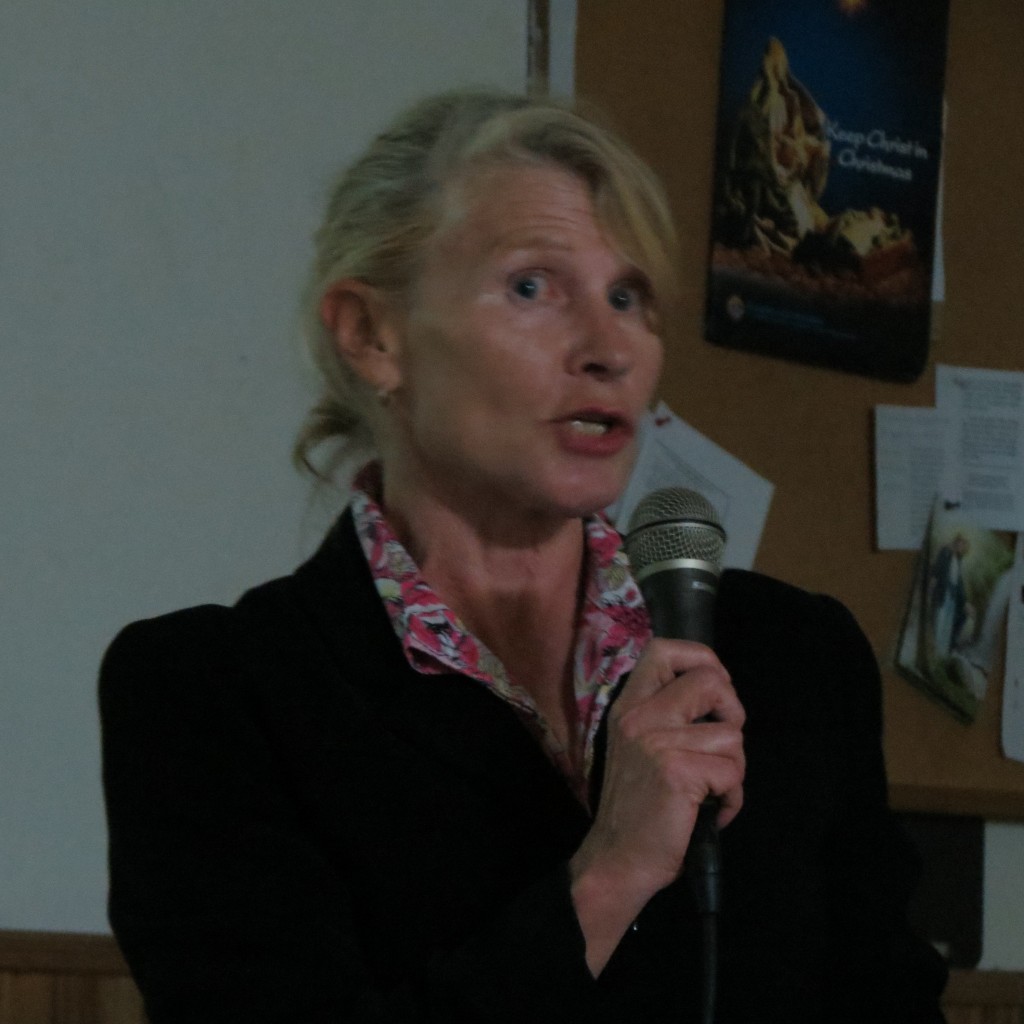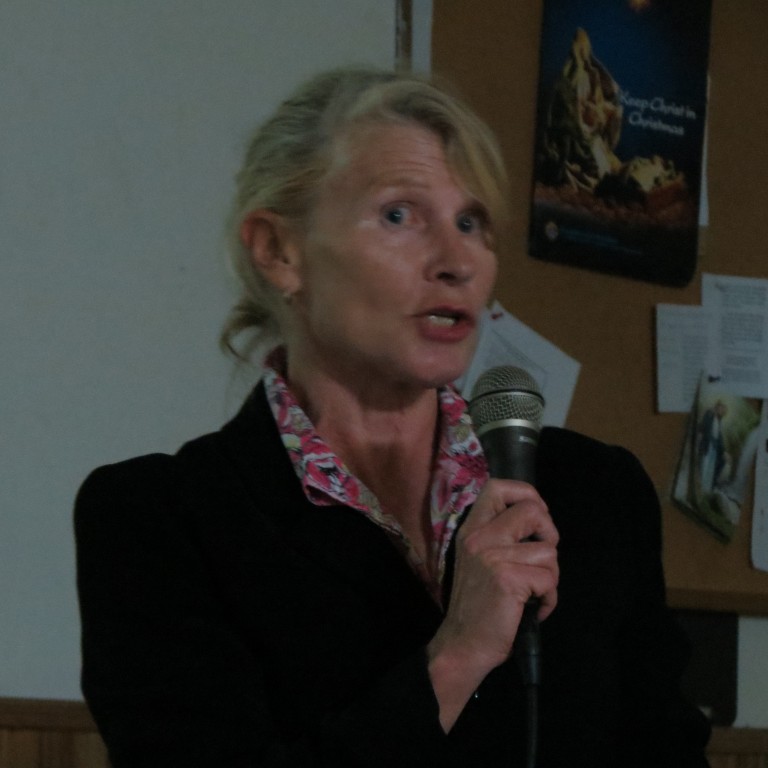
Joanna Field, a biologist with the state Department of Environmental Conservation, presented information about the proposed Spring Creek project in Howard Beach at last week’s Community Board 10 meeting. Photo by Anna Gustafson
While some Community Board 10 members said they welcomed the state’s plan to mitigate flooding in the Spring Creek area, they stressed during a presentation about the project last week that they have a litany of concerns with the initiative – particularly regarding public access to a space that residents want to remain hands-off.
“The homeowners do not want any public usage of that property,” CB 10 member Joann Ariola said at the community board’s meeting last Thursday. “…The houses have been devalued at such a rate because of Sandy. If we opened it up, it would be at such a detriment to the community.”
Gov. Andrew Cuomo announced at the end of last year that he allocated $3 million in state funds for the design of the initiative known as the Spring Creek Hazard Mitigation project, followed by about $47 million for its implementation.
The flood mitigation efforts are expected to occur along Spring Creek’s eastern shore and Jamaica Bay’s northern shore. The project site is bounded by the Belt Parkway to the north and, to the southeast, 78th Street, 161st Avenue, 83rd Street, 165th Avenue, and Cross Bay Boulevard.
The project will feature low- and high-level vegetated salt marshes, dune complexes, grasslands, and maritime forests. Additionally, approximately 765,000 cubic yards of material will be excavated at the project site and reshaped to create higher inland contours. About 40,000 cubic yards of sand will be imported and spread across the project area.
According to Cuomo, the project will restore more than 150 acres of maritime habitats, including dunes and forests; 49 acres of low marsh; 10 acres of high marsh; and six acres of tidal creek.
Joanna Field, a biologist with the state Department of Environmental Conservation, spoke about the project at last week’s CB 10 meeting and said the first phase of the project, which includes the design work, could end any time between December 2014 and July 2015. At the very latest, she said the entire project is slated to be completed by the summer of 2017.’
“The Army Corps of Engineers has already identified some strong contenders” for contractors for the project, Field told residents.
The first phase of the project includes collecting data about the site – such as wetlands delineation, air sampling, and soil testing. Actual construction would begin in the second phase.
A representative from the National Park Service, who presented information alongside Field, said the initiative will “improve the habitat” and prove to be far better for area animals and greenery than the phragmites currently at the site.
While Ariola said residents welcome any help with flooding in the area, she also said homeowners were concerned about a mass influx of people to an area without an increase in policing of the site.
“We cannot say there cannot be public use of public parkland,” CB 10 Chairperson Betty Braton said in response to Ariola.
By Anna Gustafson

